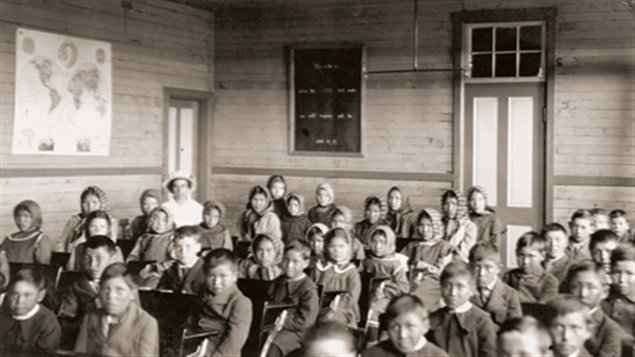The notion that one group of people, through a legislative process, can forcibly confine another group of people to pitiful land, trickle in barely enough resources to keep said people alive, and ultimately marginalize and demoralize generations to come, might seem like an un-Canadian experience. Images of South Africa, Gaza, ghettos in the United States or Brazil come to mind – where the undesirables are violently lumped together and left to dangle. Those who resist this practice are labelled rebels, extremists, or terrorists – as was Mandela.
April 12th marks the 138th anniversary of the passing of the Indian Act by Parliament. Just a few weeks ago, on April 1st, 1960, First Nations Canadians received the right to vote. The Indian Act of 2014 still largely looks the same as it did in 1876, save from some adjustments made in the 60s and 80s. International organizations are appalled by the Act, and only recently were First Nations under the Act able to make human rights complaints to the Canadian Human Rights Commission. What started out in 1876 as an official apartheid movement, remains in the form of marginalization, ghettoization, and societal exclusion.
The Indian Act of 1876 was a solution to two pieces of previous legislation in 1857 and 1869 designed to assimilate indigenous people in this country. John A. certainly was on the prowl for land, and the numbered treaties, signed under ultimate duress due to starvation, were messy and applied to diverse groups. The Indian Act was and is designed to sweep people under the rug in the hopes that would simply disappear or some how become “Canadian.”
The Act itself in 1876 suggested that:
Our Indian legislation generally rests on the principle, that the aborigines are to be kept in a condition of tutelage and treated as wards or children of the State. …the true interests of the aborigines and of the State alike require that every effort should be made to aid the Red man in lifting himself out of his condition of tutelage and dependence, and that is clearly our wisdom and our duty, through education and every other means, to prepare him for a higher civilization by encouraging him to assume the privileges and responsibilities of full citizenship.
We know where this system of education led. The amendments to the Act between 1876 and 1951 took away ceremonial, legal, and human rights away from those living on reserve. The Act treated women as second class, and it excluded numerous people who were not determined to be “Indian.”
Presently, the Canadian government determines virtually all policy on reserve as it did in 1876, and as we see, does not provide the services it agreed to 138 years ago. Many First Nations leaders have expressed great interest in keeping the Act (most famously when Trudeau, the older one, proposed getting rid of it), as it maintains that indigenous people in this country have a distinct relationship with Canada.
Unfortunately, most Canadians are unaware of the implications of the Act or have huge misconceptions of it. Many of my contemporaries express sentiments to the extent that “Indians get everything for free,” or “why don’t ‘they’ just move off the reserve and get a job?” Or recently in the mainstream media, headlines were suggesting a collective eye roll over residential schools.
This is where education comes in. If we look at other examples of apartheid, we can see that the process of reconciliation is difficult, often painful, and that sacrifice is warranted. In South Africa, those who were marginalized are still so economically. Throughout the colonized world – Africa, the Americas, and Asia – the most vulnerable are still those who were conquered – including those who we see on our way to Jets games downtown. In Winnipeg, we unofficially ghettoize First Nations people in certain neighbourhoods.
What if we focused more on these power relationships, on these pieces of legislation, and on what decolonization might truly mean in our schools? As a teacher of Canadian history, I am pressured to expose learners to 25 000 years of history in 10 months – less winter holidays, Spring Break, and the constant interruptions of English field trips and Math contests (ha!). People often question why I turn so much attention to colonial history and the history of Red River in my learning community; “Why don’t you spend more time on the 20th century?” they ask.
Fortunately, when we study the relationship of Canada and indigenous people over the past 138 years, we are able to investigate big ideas like Confederation, the Welfare state, global conflict, constitutional stress – all through the context of our colonial relationships in the 20th century. Canada is less a story about rags-to-riches and more of a story of exploitation of resources and people. It is critical that teachers, be it in schools, in the home, or on the bus, create a lens for this exploration. If not, we are destined to be a country based on apartheid.
___
Matt Henderson is a Social Studies teacher at St. John’s-Ravenscourt in Winnipeg. He can be reached at @henderson204.
